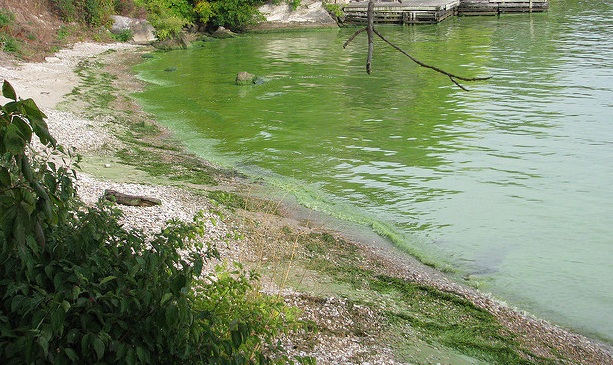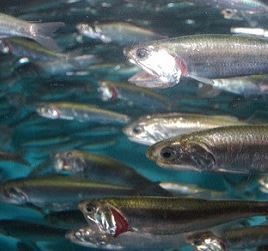
Harmful algae bloom on Lake Erie on Kelley’s Island, Ohio. (Image by NOAA Great Lakes Environmental Research Laboratory via Flickr)
Numerous bodies of water in Canada are affected by algal bloom, which occurs when the water is saturated with excess nutrients. New research examines the process through which one such nutrient, phosphorus, is recycled between mud on the lake bottom and water surface. Study authors reviewed data from 70 water bodies in Canada, including Lake Simcoe, Lake Winnipeg, Lake Erie, Lake Champlain and Lake Diefenbaker. Their findings showed that the phosphorus release from sediments is a common phenomenon in Canadian fresh waters, but that rates of this process varied dramatically from lake to lake: the lowest rates were found in Canadian Shield lakes in Ontario and the Maritimes, while prairie lakes in Manitoba, Saskatchewan and Alberta saw some of the highest rates of phosphorus release. Researchers also identified the key factors controlling this process, such as oxygen, pH, geology and lake nutrient status.
Authors:
Diane M. Orihel, Helen M. Baulch, Nora J. Casson, Rebecca L. North, Chris T. Parsons, Dalila C.M. Seckar, Jason J. Venkiteswaran
Lead Canadian author:
Diane Orihel, Department of Biology, Queen’s University, Kingston, ON, Email: diane.orihel@queensu.ca
Original paper published in the Canadian Journal of Fisheries and Aquatic Sciences on September 13, 2017.

